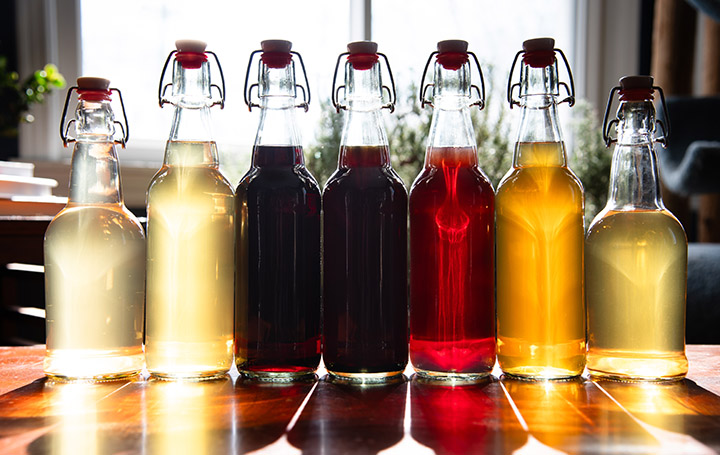Your switch from natural cork to swing-top bottles is an entirely reasonable one given your storage constraints, and you’ve taken the right steps to ensure your wine is kept in a stable environment at 55 °F (13 °C). Swing-top bottles with good seals can absolutely work for short- to medium-term storage, provided they maintain an airtight closure. The key difference between traditional cork and swing-tops lies in how they influence the wine’s aging process.

Natural corks allow for a slow, controlled exchange of oxygen over time, which helps red wines develop complexity, soften tannins, and integrate flavors as they mature. Swing-top closures with rubber gaskets tend to create a more airtight seal, limiting that oxygen exchange. This means your wine may age more slowly and retain more of its youthful, fruit-forward character rather than developing the secondary aromas and flavors that a cork-sealed bottle might encourage over years. However, since home winemakers often consume their wine within a few years rather than decades, this may not be a downside at all!
One critical factor in using swing-top bottles successfully is careful selection and ongoing inspection of both the bottles and their seals. Not all swing-top bottles are created equal — some have heavier glass and sturdier wire mechanisms, making them better suited for repeated use. The real weak point, however, is the rubber gasket on the stopper itself. Over time, these gaskets can dry out, crack, or compress, which may compromise the seal and allow unwanted oxygen exposure. If you plan to reuse swing-top bottles over multiple vintages, it’s wise to regularly inspect the gaskets and replace them when they show signs of wear. Some winemakers even swap out standard rubber gaskets for food-grade silicone alternatives, which tend to have greater longevity and resistance to drying out.
Additionally, pay attention to how well the stopper snaps into place. If the wire bail feels loose or the closure doesn’t sit snugly against the bottle rim, you may have an imperfect seal that could lead to oxidation or even leakage over time. While swing-tops offer convenience, they do require some diligence in maintaining their integrity. If you notice inconsistent seals or repeated gasket failures, you might reconsider using them for long-term storage and instead reserve them for wines meant to be enjoyed sooner rather than later.
The real test is how your wine evolves over time in this new format. I’d suggest setting aside a few bottles and tasting them at intervals — six months, a year, two years — just to track how the wine develops. If you like the result and continue to have no issues with leakage or oxidation then you’ve discovered a new way for you to work with your wines. If you feel the need to go back to corks and bottles, that’s fine too. If storage for those things is an issue like it seems to be, you can always share equipment with friends or rent a corker from your local winemaking supply shop (if such a thing exists in your area). Either way you land, you’re adapting to your space while still making and enjoying your own wine, and that’s what truly matters.



